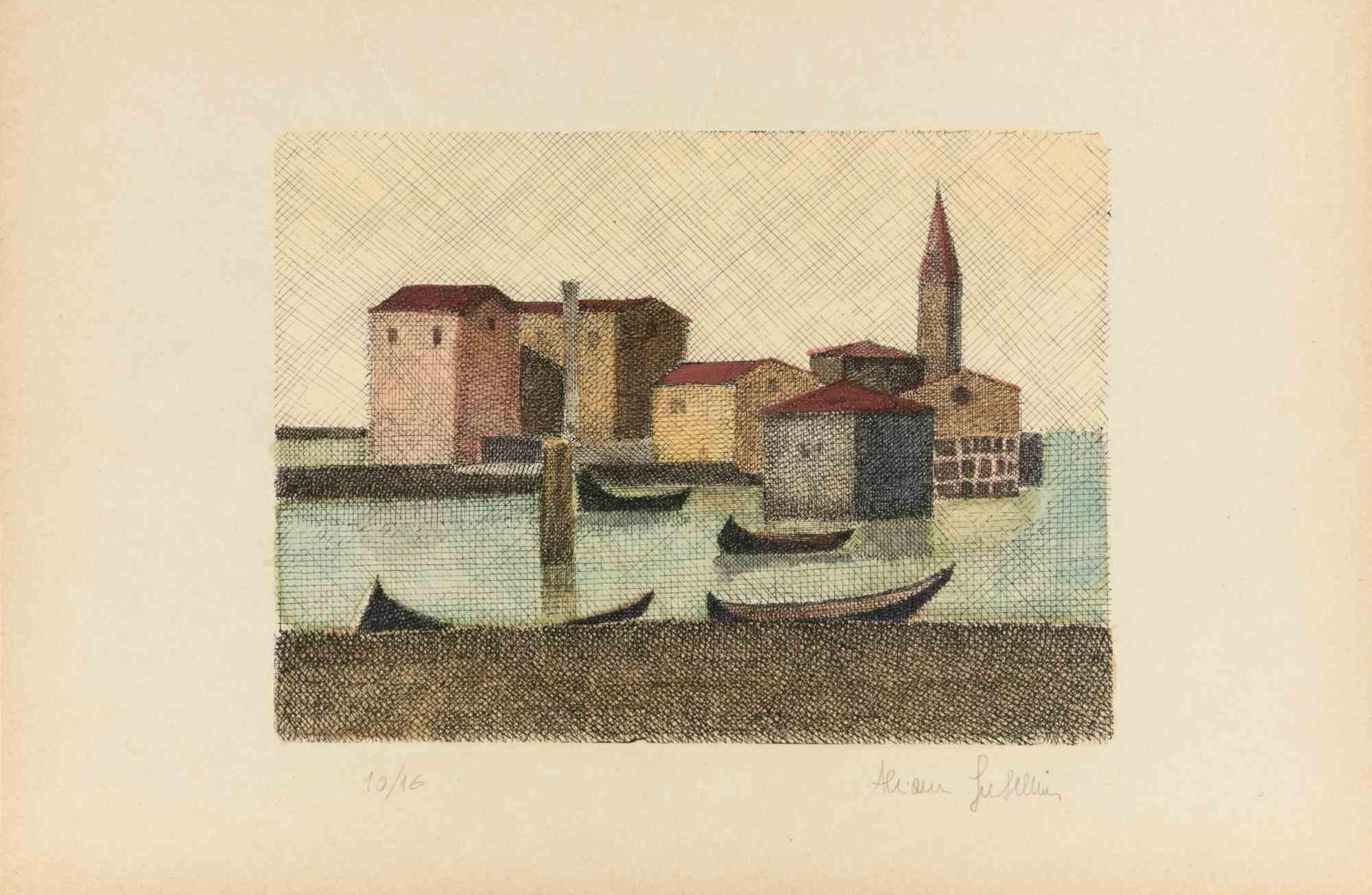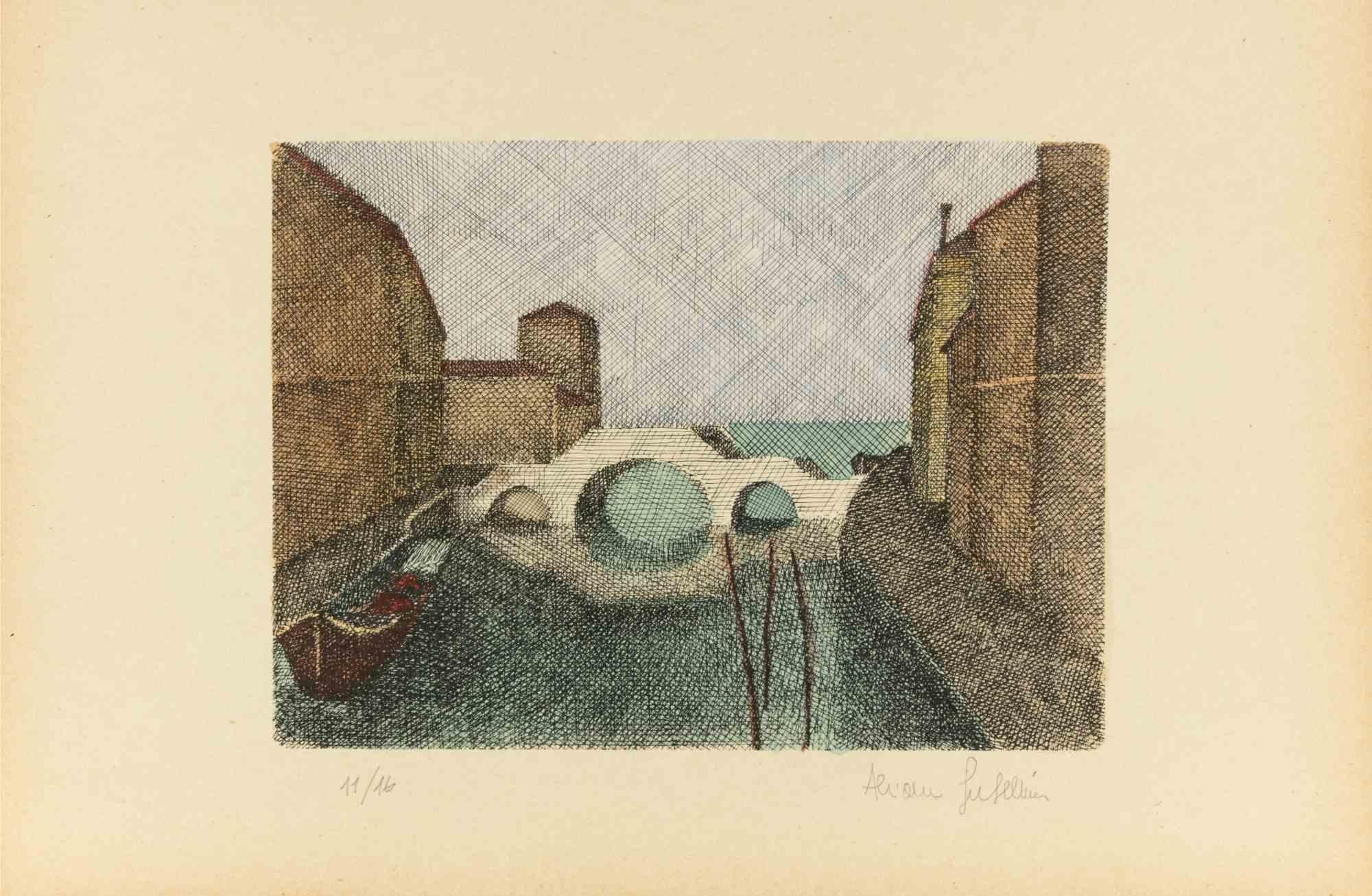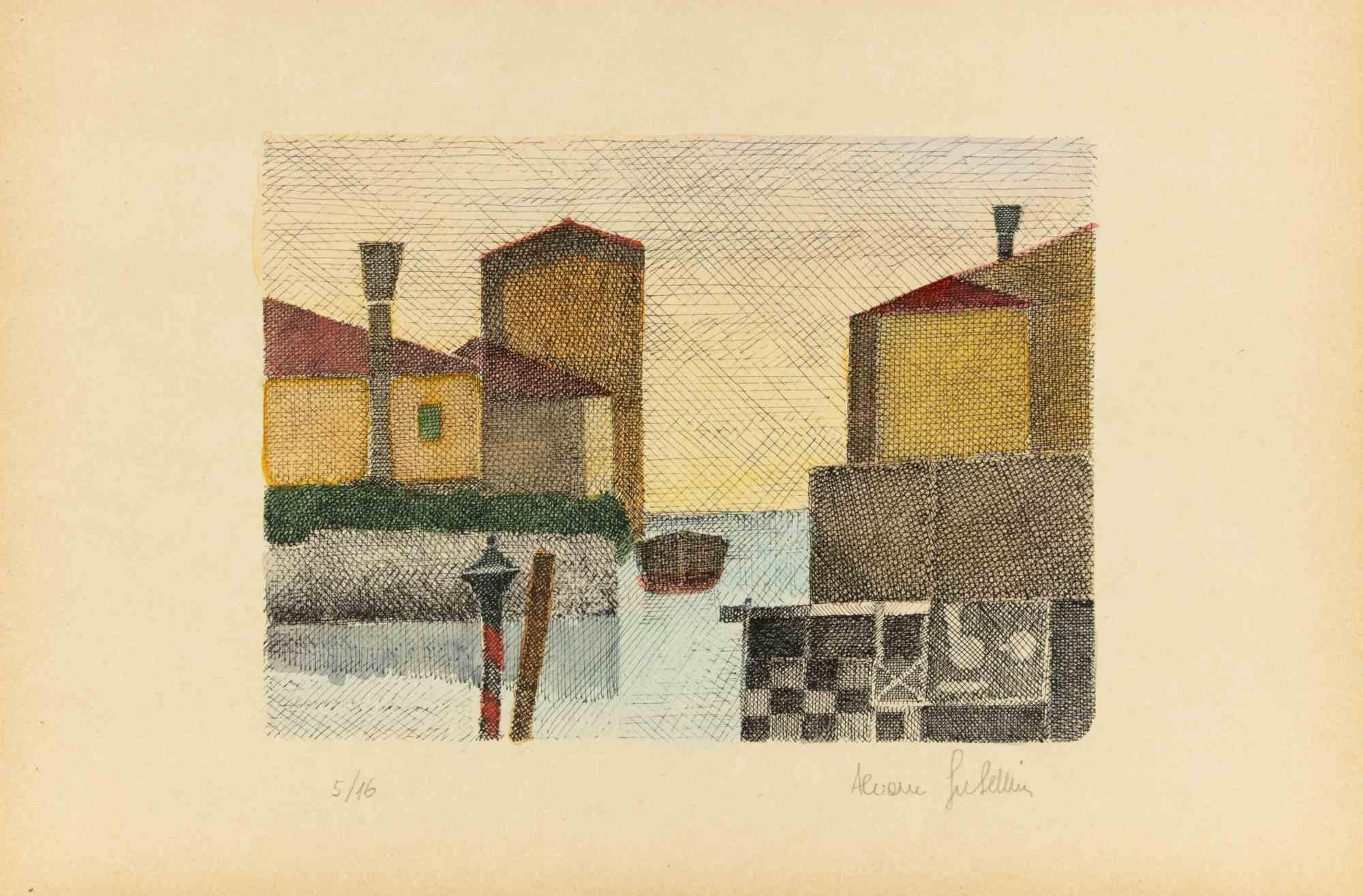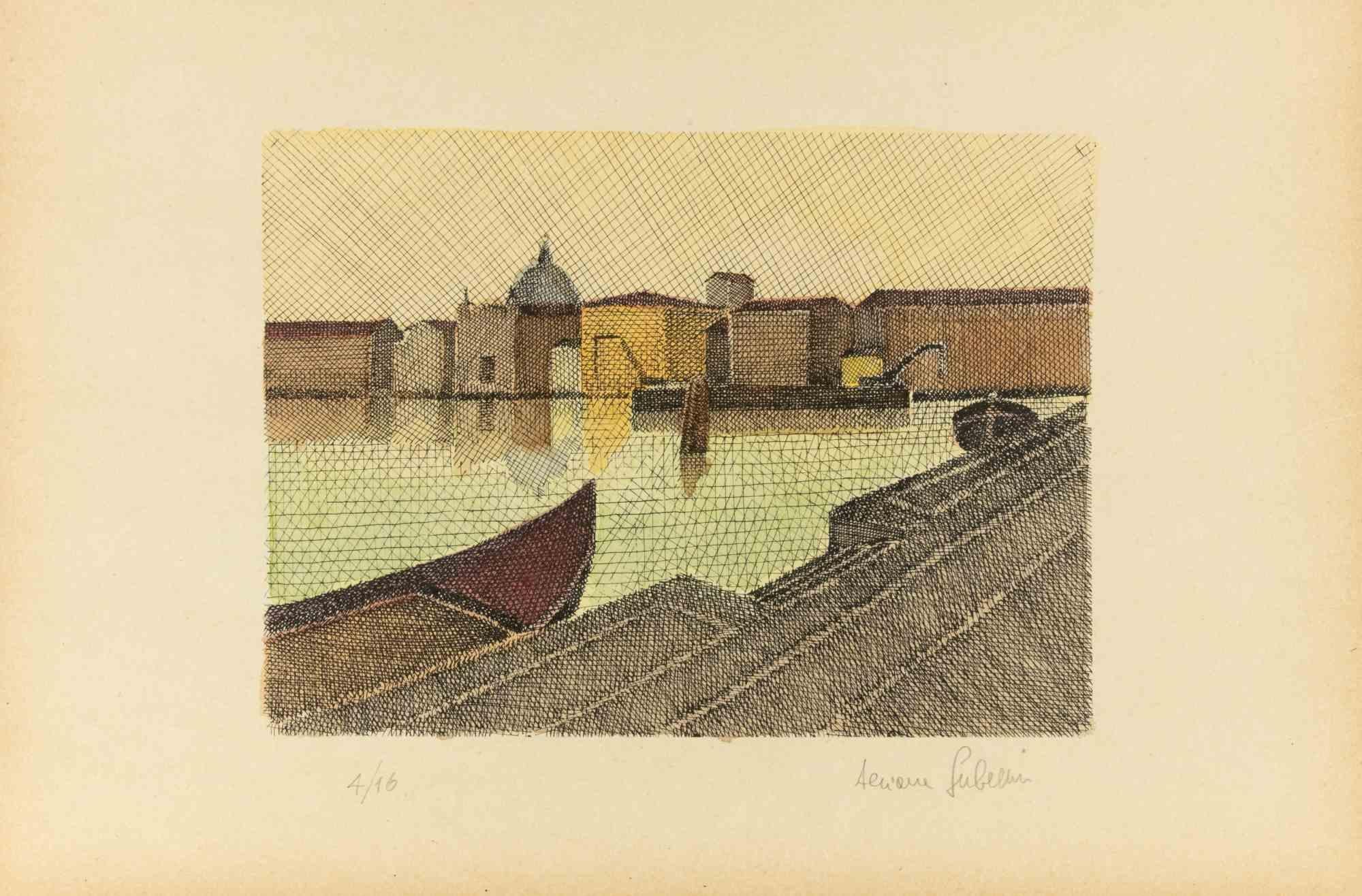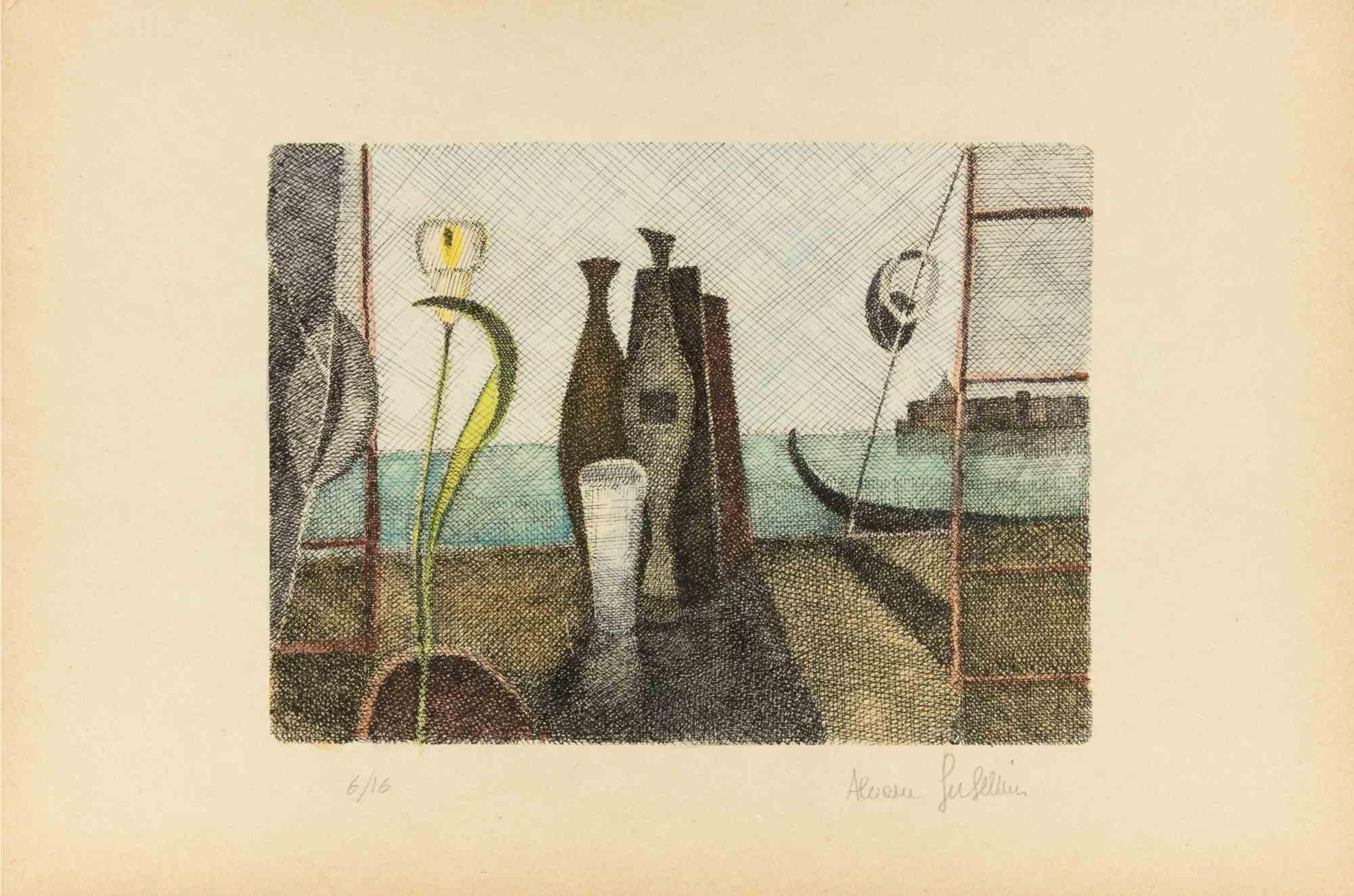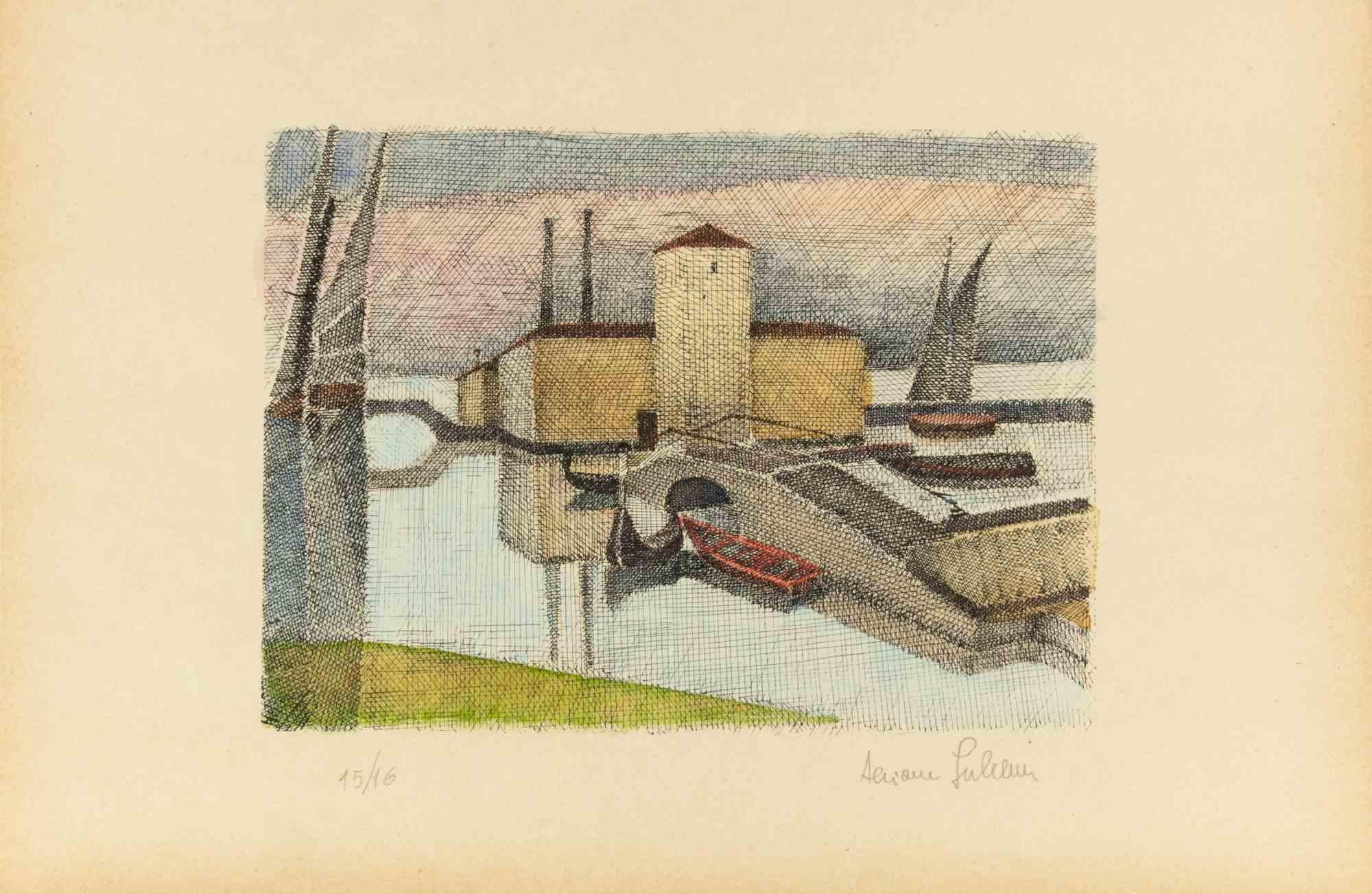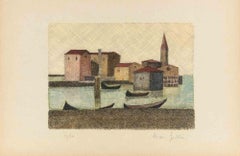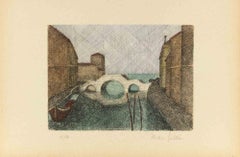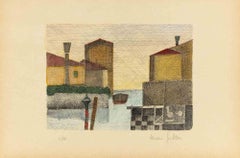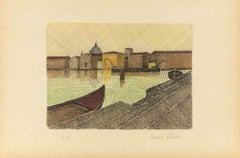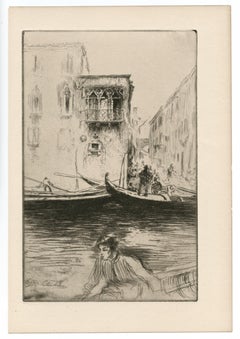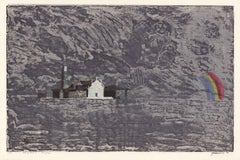Items Similar to View of Venice - Etching by Alcione Gubellini - mid-20th Century
Want more images or videos?
Request additional images or videos from the seller
1 of 2
Alcione GubelliniView of Venice - Etching by Alcione Gubellini - mid-20th Centurymid-20th Century
mid-20th Century
$358.77
£266.70
€300
CA$500.47
A$542.90
CHF 285.49
MX$6,605.99
NOK 3,569.05
SEK 3,366.05
DKK 2,284.68
About the Item
Etching and drypoint realized by Alcione Gubellini in the mid-20th Century.
Edition of 16.
Hand signed and numbered in pencil.
Excellent condition.
- Creator:Alcione Gubellini (1913)
- Creation Year:mid-20th Century
- Dimensions:Height: 13.59 in (34.5 cm)Width: 9.06 in (23 cm)Depth: 0.04 in (1 mm)
- Medium:
- Movement & Style:
- Period:
- Framing:Framing Options Available
- Condition:Insurance may be requested by customers as additional service, contact us for more information.a.
- Gallery Location:Roma, IT
- Reference Number:Seller: T-1560501stDibs: LU650316797652
About the Seller
4.9
Platinum Seller
Premium sellers with a 4.7+ rating and 24-hour response times
1stDibs seller since 2017
7,737 sales on 1stDibs
Typical response time: 2 hours
- ShippingRetrieving quote...Shipping from: Monaco, Monaco
- Return Policy
Authenticity Guarantee
In the unlikely event there’s an issue with an item’s authenticity, contact us within 1 year for a full refund. DetailsMoney-Back Guarantee
If your item is not as described, is damaged in transit, or does not arrive, contact us within 7 days for a full refund. Details24-Hour Cancellation
You have a 24-hour grace period in which to reconsider your purchase, with no questions asked.Vetted Professional Sellers
Our world-class sellers must adhere to strict standards for service and quality, maintaining the integrity of our listings.Price-Match Guarantee
If you find that a seller listed the same item for a lower price elsewhere, we’ll match it.Trusted Global Delivery
Our best-in-class carrier network provides specialized shipping options worldwide, including custom delivery.More From This Seller
View AllView of Venice - Etching by Alcione Gubellini - Mid-20th Century
By Alcione Gubellini
Located in Roma, IT
Etching and drypoint realized by Alcione Gubellini in the mid-20th Century.
Edition of 16.
Hand signed and numbered in pencil.
Excellent condition.
Category
Mid-20th Century Modern Landscape Prints
Materials
Etching
View of Venice - Etching by Alcione Gubellini - Mid-20th Century
By Alcione Gubellini
Located in Roma, IT
Etching and drypoint realized by Alcione Gubellini in the mid-20th Century.
Edition of 16.
Hand signed and numbered in pencil.
Excellent condition.
Category
Mid-20th Century Modern Landscape Prints
Materials
Etching
View of Venice - Etching by Alcione Gubellini - Mid-20th Century
By Alcione Gubellini
Located in Roma, IT
Etching and drypoint realized by Alcione Gubellini in the mid-20th Century.
Edition of 16.
Hand signed and numbered in pencil.
Excellent condition.
Category
Mid-20th Century Modern Landscape Prints
Materials
Etching
View of Venice - Etching by Alcione Gubellini - Mid-20th Century
By Alcione Gubellini
Located in Roma, IT
Etching and drypoint realized by Alcione Gubellini in the mid-20th Century.
Edition of 16.
Hand signed and numbered in pencil.
Excellent condition.
Category
Mid-20th Century Modern Landscape Prints
Materials
Etching
View of Venice - Etching by Alcione Gubellini - Mid-20th Century
By Alcione Gubellini
Located in Roma, IT
Etching and drypoint realized by Alcione Gubellini in the mid-20th Century.
Edition of 16.
Hand signed and numbered in pencil.
Excellent condition.
Category
Mid-20th Century Modern Landscape Prints
Materials
Etching
View of the Laguna in Venice - Etching by Alcione Gubellini - Mid-20th Century
By Alcione Gubellini
Located in Roma, IT
Etching and drypoint realized by Alcione Gubellini in the mid-20th Century.
Edition of 16.
Hand signed and numbered in pencil.
Excellent condition.
Category
Mid-20th Century Modern Landscape Prints
Materials
Etching
You May Also Like
"Rio Ca Foscari, Venice" original etching
By Edgar Chahine
Located in Henderson, NV
Medium: original etching. Catalogue reference: Tabanelli 220. This impression on watermarked laid paper was printed in 1906 and published by Gazette des Beaux Arts. Plate size: 8 5/8...
Category
Early 1900s Landscape Prints
Materials
Etching
"Venice" original etching
By Charles Abel Corwin
Located in Henderson, NV
Medium: original etching. This impression on wove paper was printed in 1885 for the Sylvester R. Koehler portfolio of etchings and published by Cassell & Company. Plate size: 8 x 5 1...
Category
1880s Prints and Multiples
Materials
Etching
View of Venice I - San Giorgio
By Antonio Frasconi
Located in New York, NY
Antonio Frasconi created the color woodcut entitled "View of Venice I – San Giorgio" in 1968. It is signed, titled, dated, and inscribed “17/20” in pencil. The paper size is 24 x 36 ...
Category
1960s American Modern Landscape Prints
Materials
Woodcut
Venice canal view with classical renaissance architecture by italian etcher
By Federica Galli
Located in Milan, IT
ref. 549
A prominent figure of the art of engraving in Italy, Federica Galli was born in 1932 in Soresina – a village just outside Cremona. Straight after the war, in 1946, she conv...
Category
1980s Realist Landscape Prints
Materials
Etching
View of San Giorgio in Venice, Impressionist Lithograph by Paul Aizpiri
By Paul Aizpiri
Located in Long Island City, NY
View of San Giorgio in Venice
Date: circa 1970
Lithograph, signed and numbered in pencil
Edition of 36/50
Image Size: 21 x 16 inches
Frame Size: 28 x 23.5 inches
Category
1970s Modern Landscape Prints
Materials
Lithograph
Pair of contemporary Venice views. Prints by F. Galli, Italian etcher.
By Federica Galli
Located in Milan, IT
Here we propose a pair of etchings by Federica Galli, whose size, subjects and composition form a pendant. But the two prints can also be sold separately.
Lago dei Pageri and Squero...
Category
20th Century Contemporary Landscape Prints
Materials
Etching
